site search
online catalog
COOK RIFLE

Hover to zoom

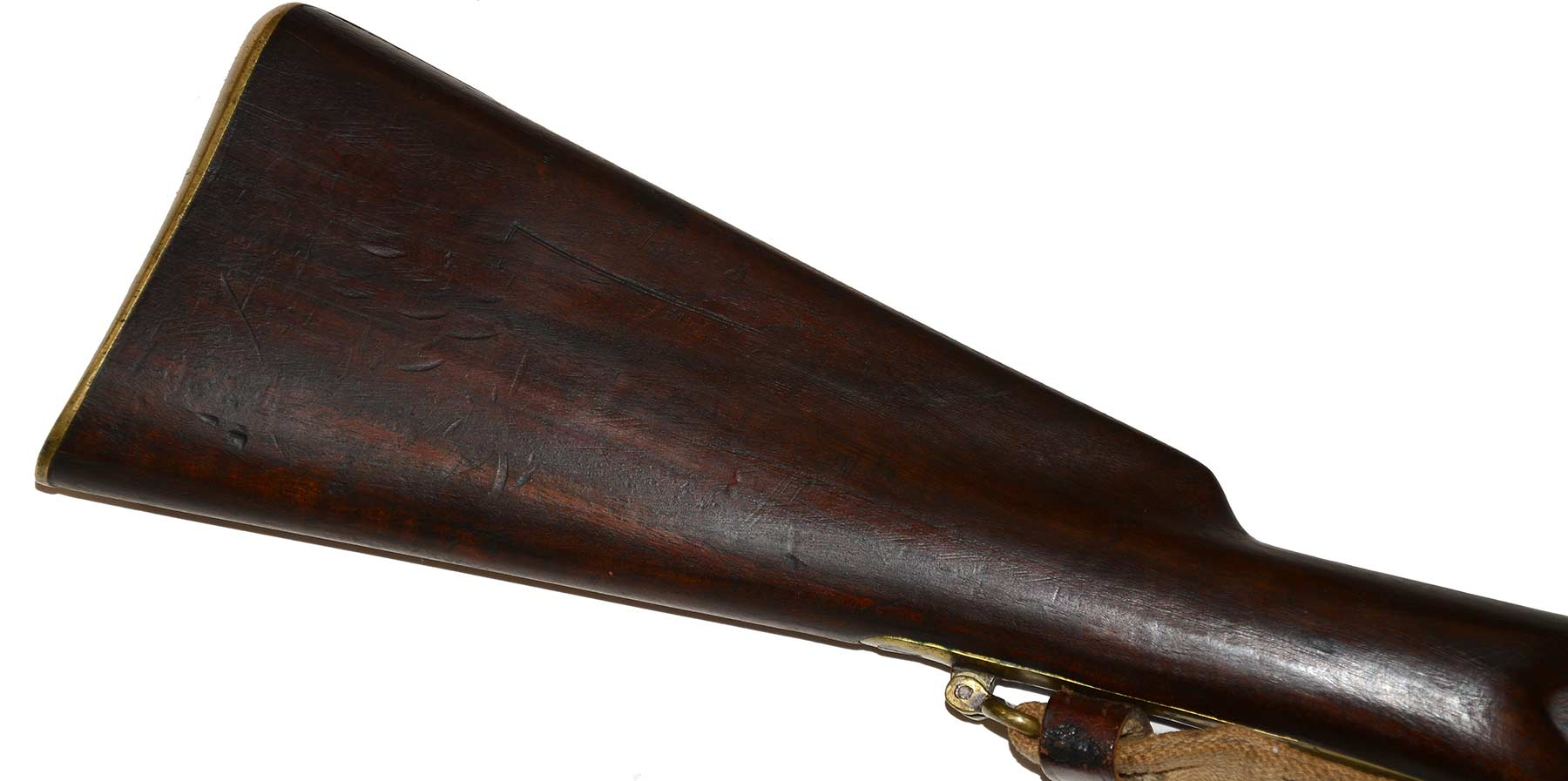
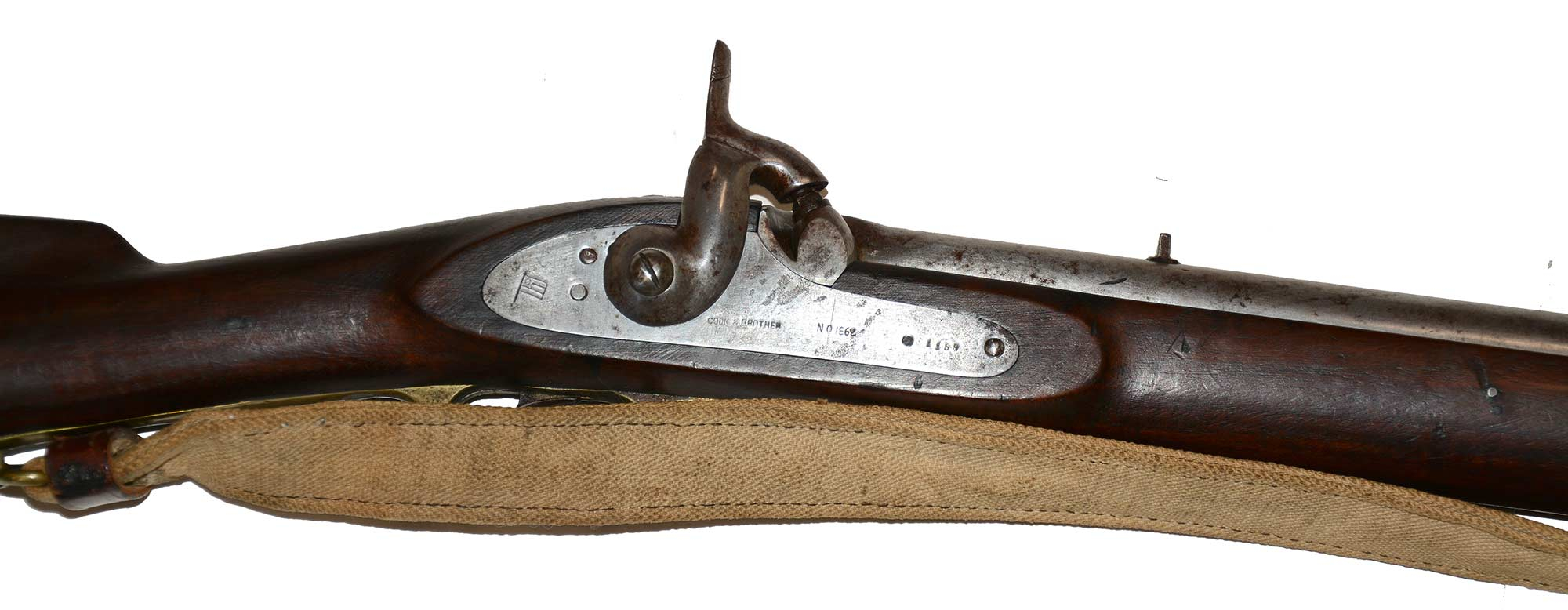


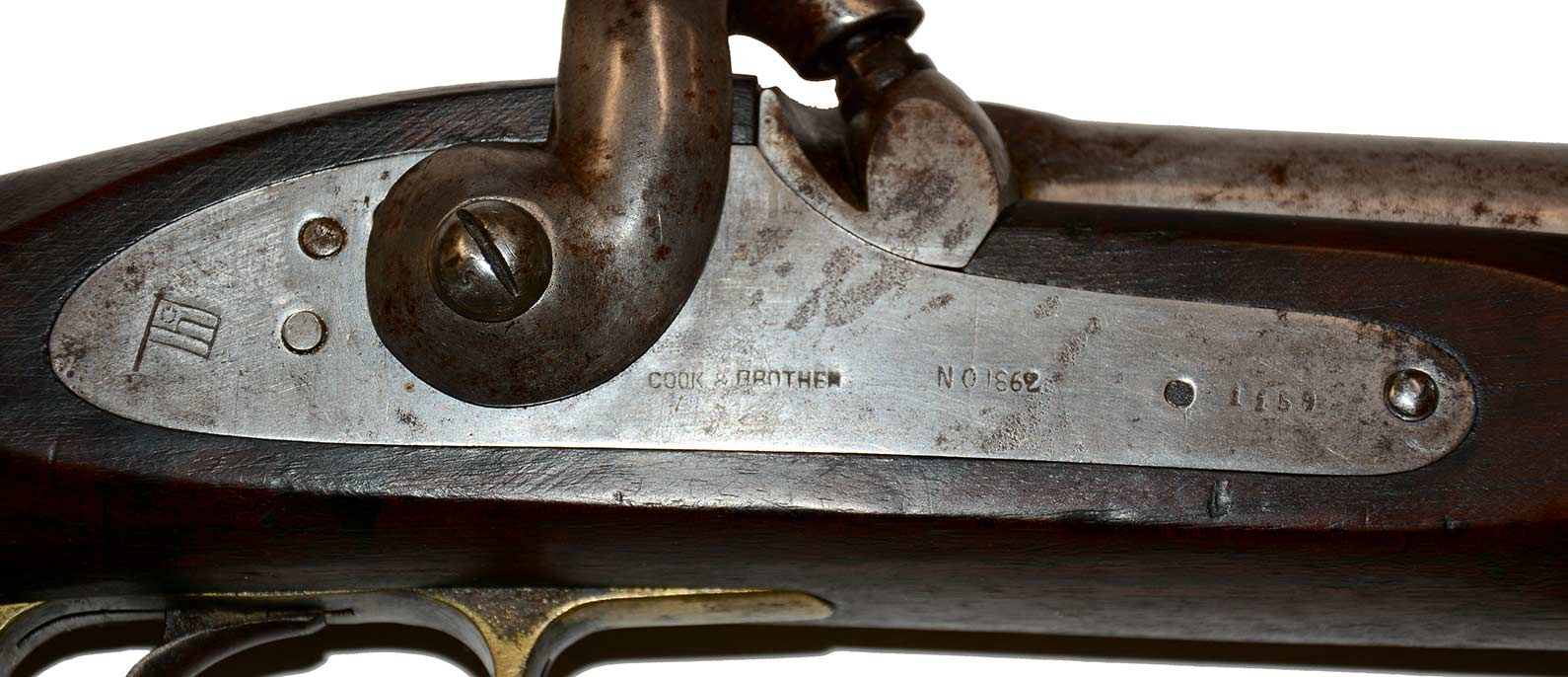
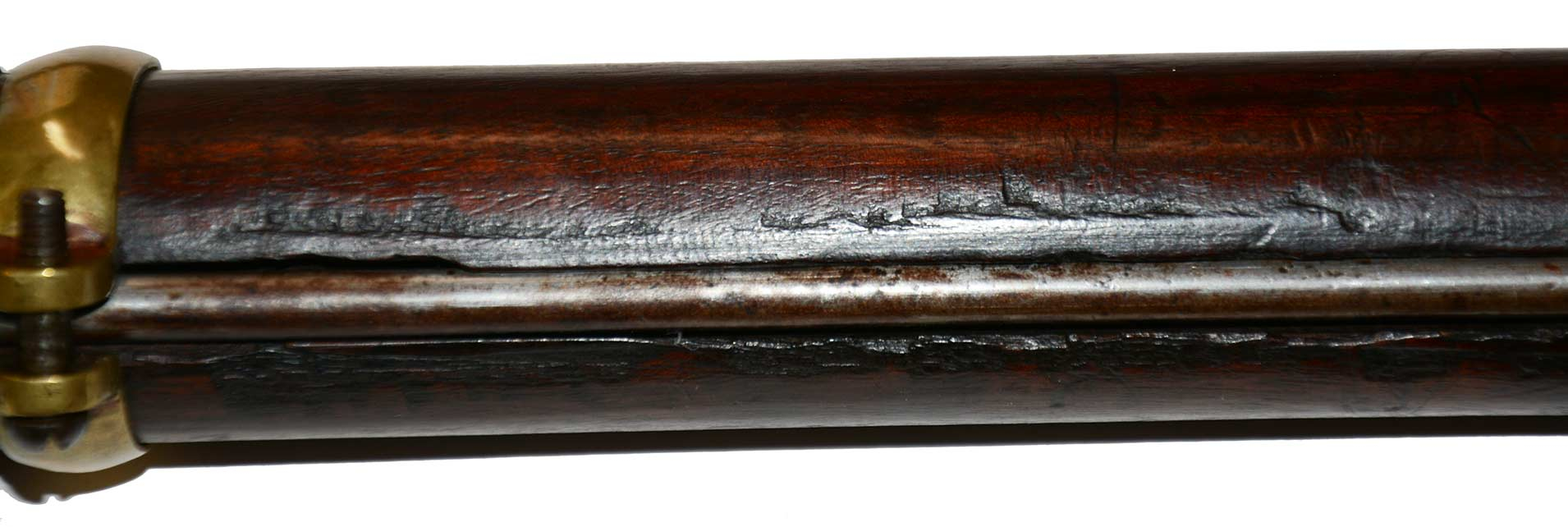
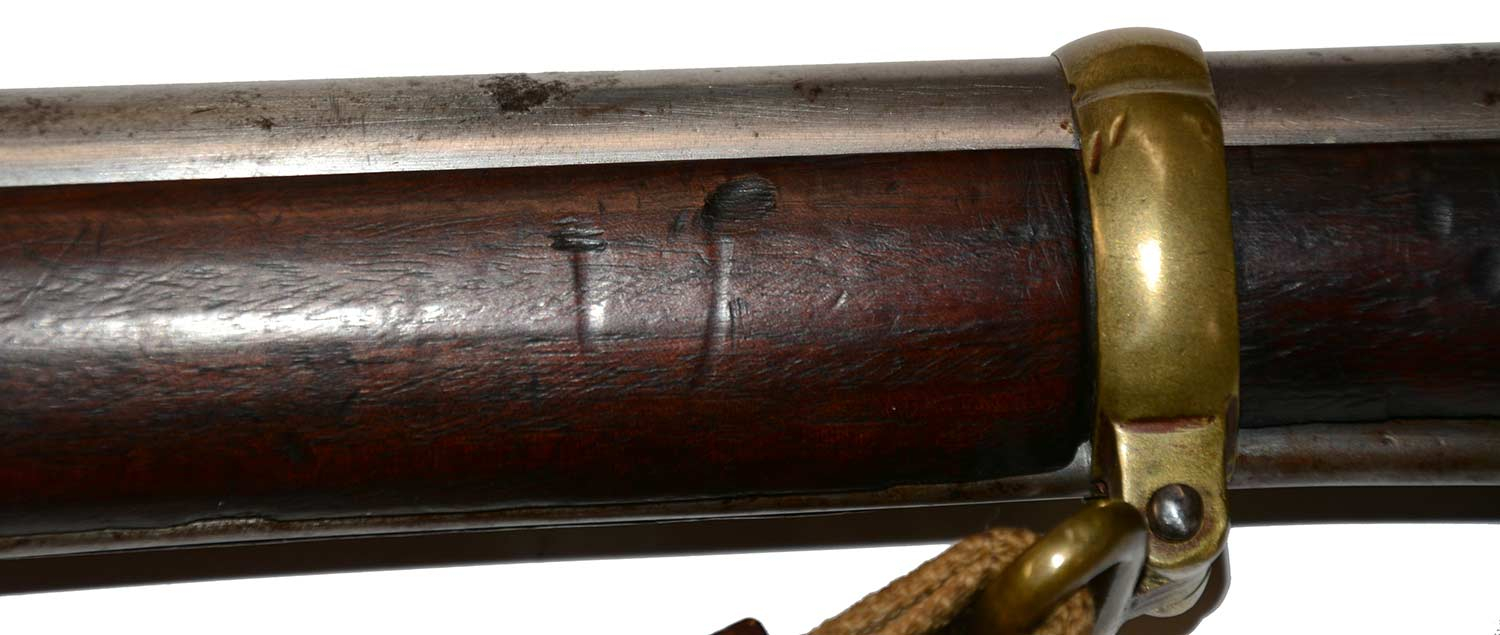

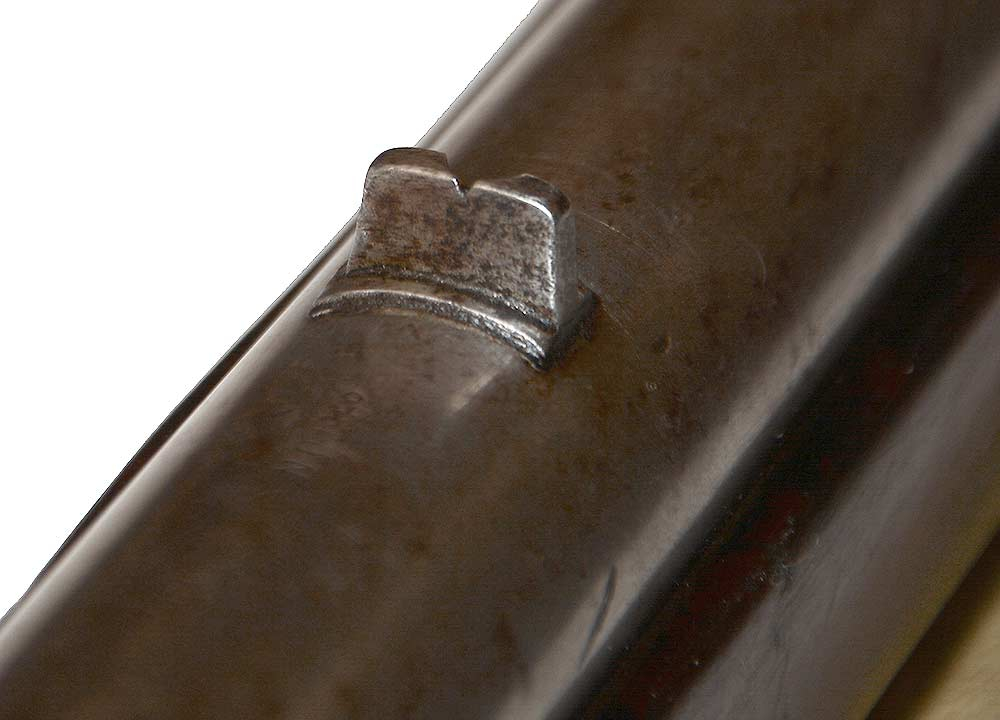
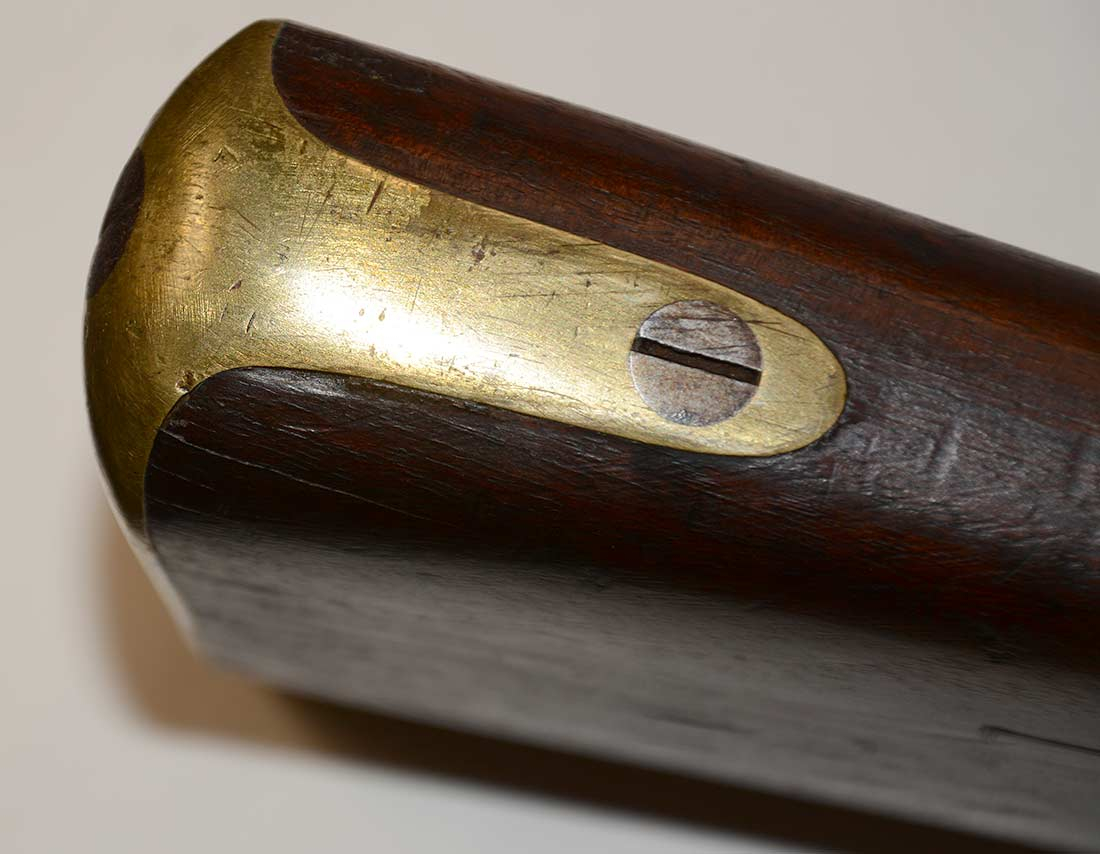
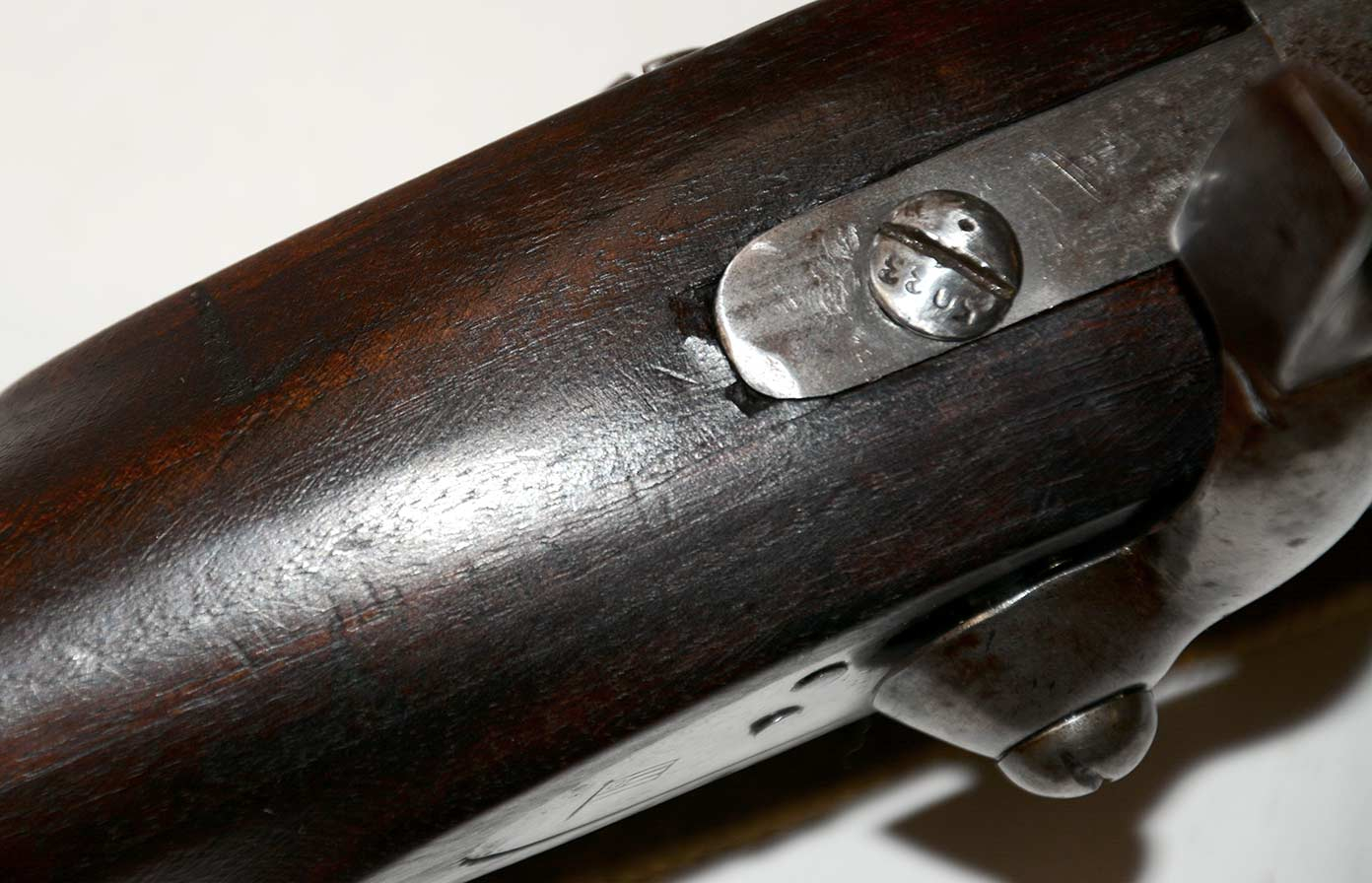
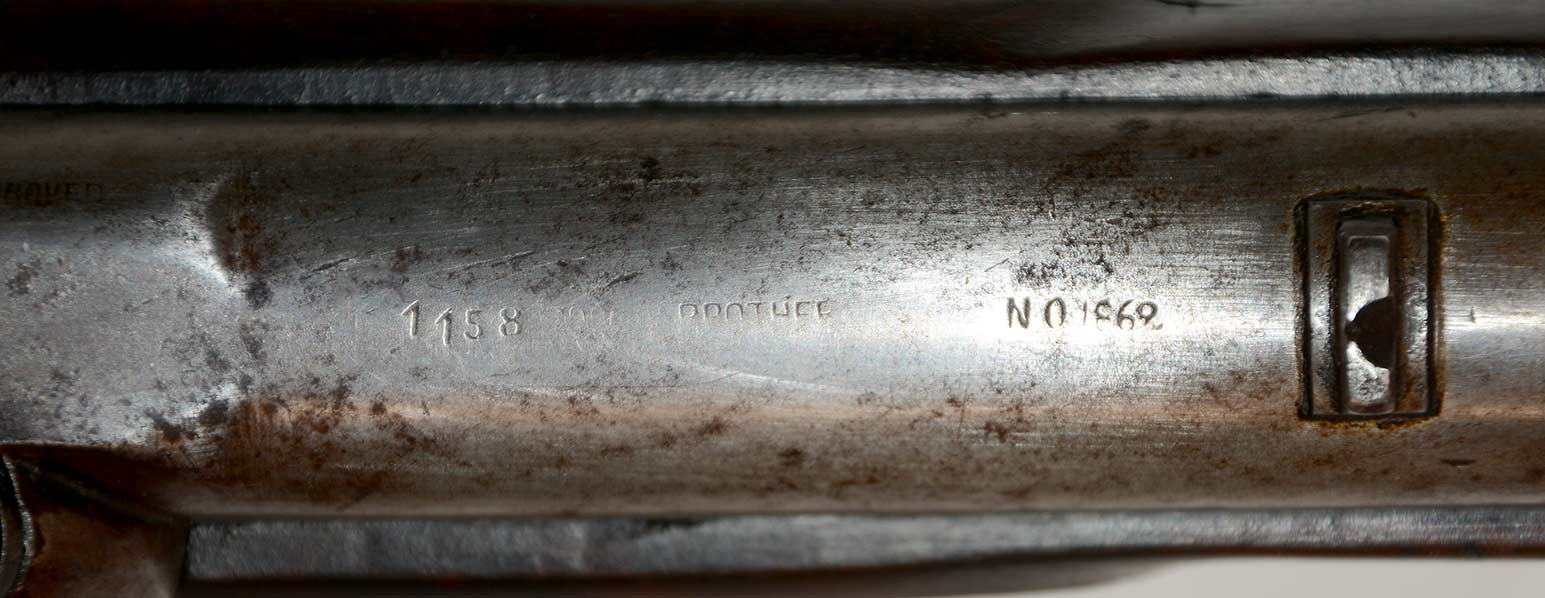
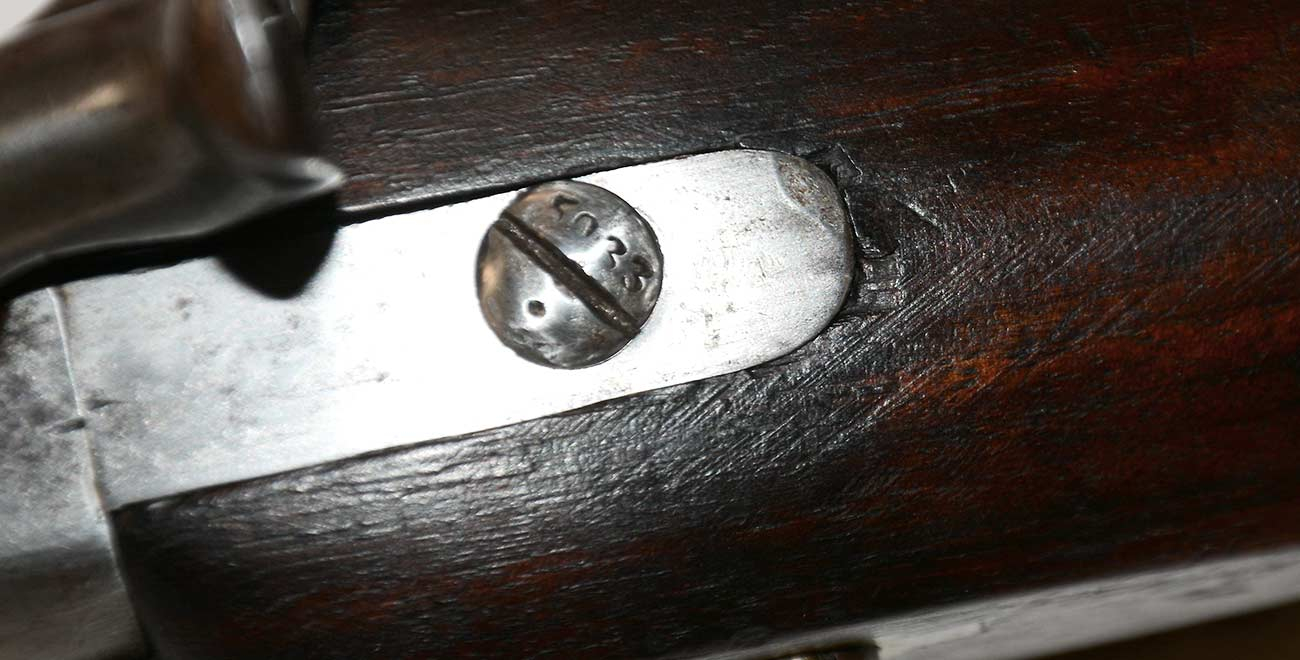

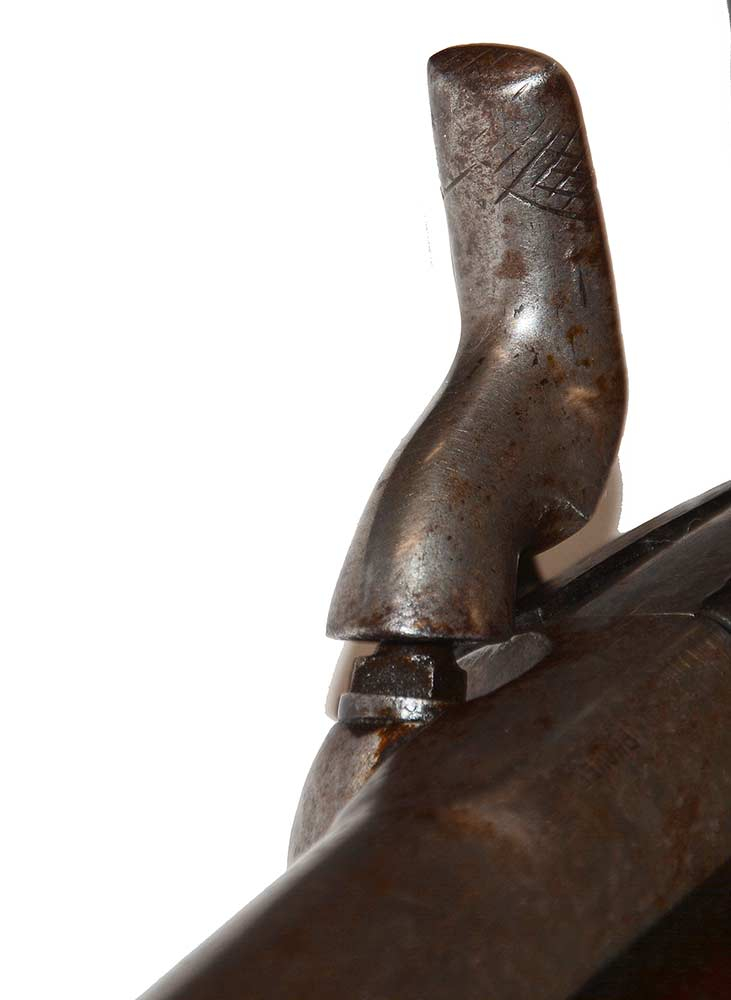
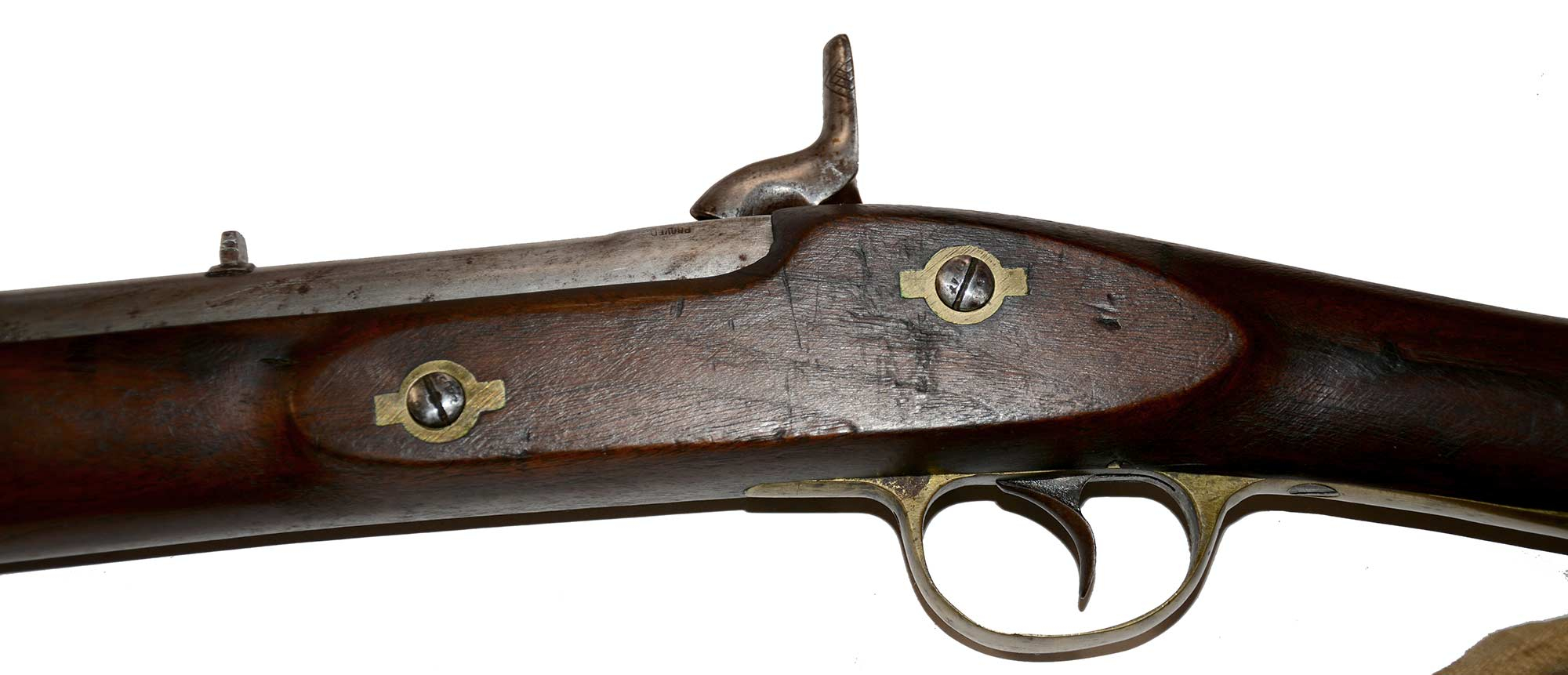
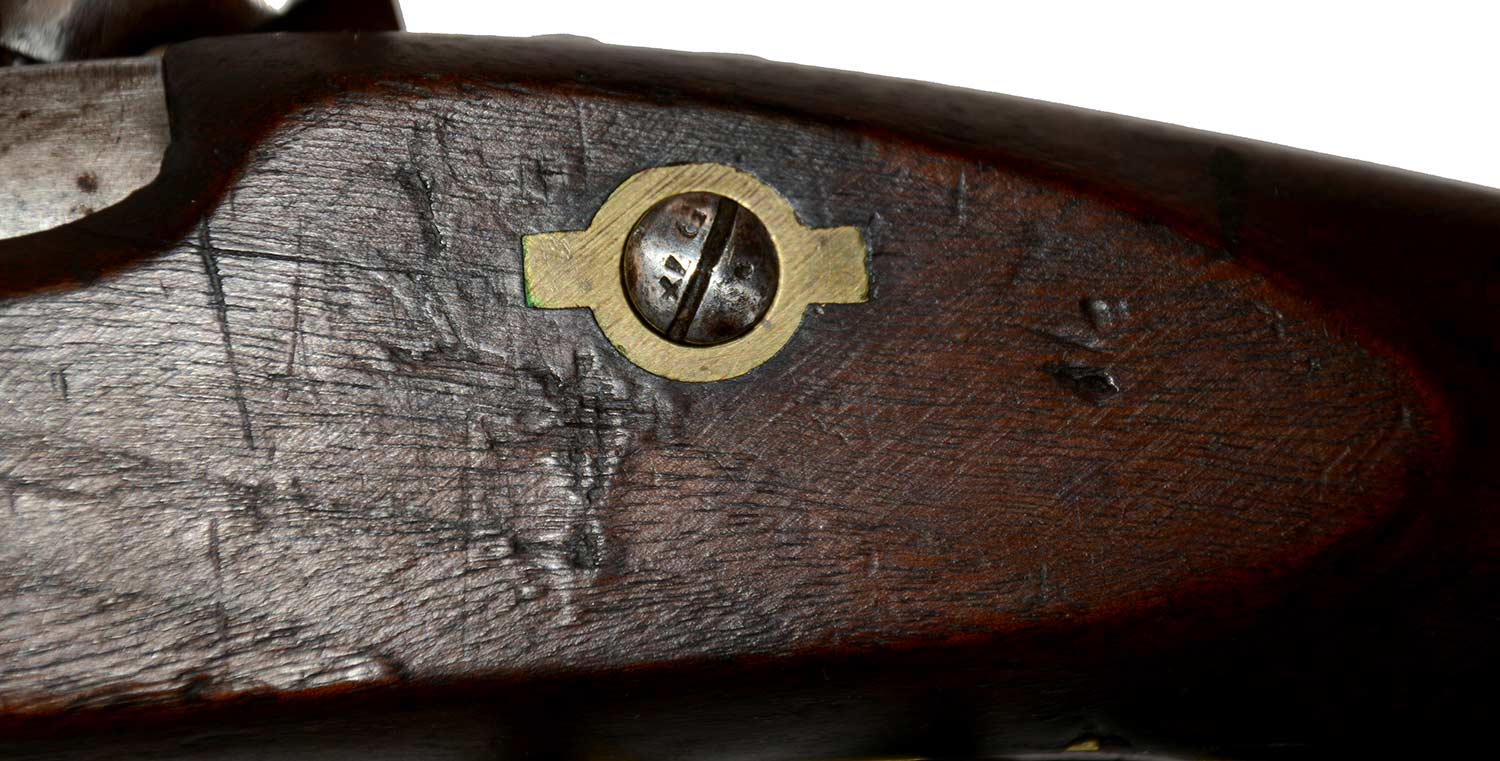
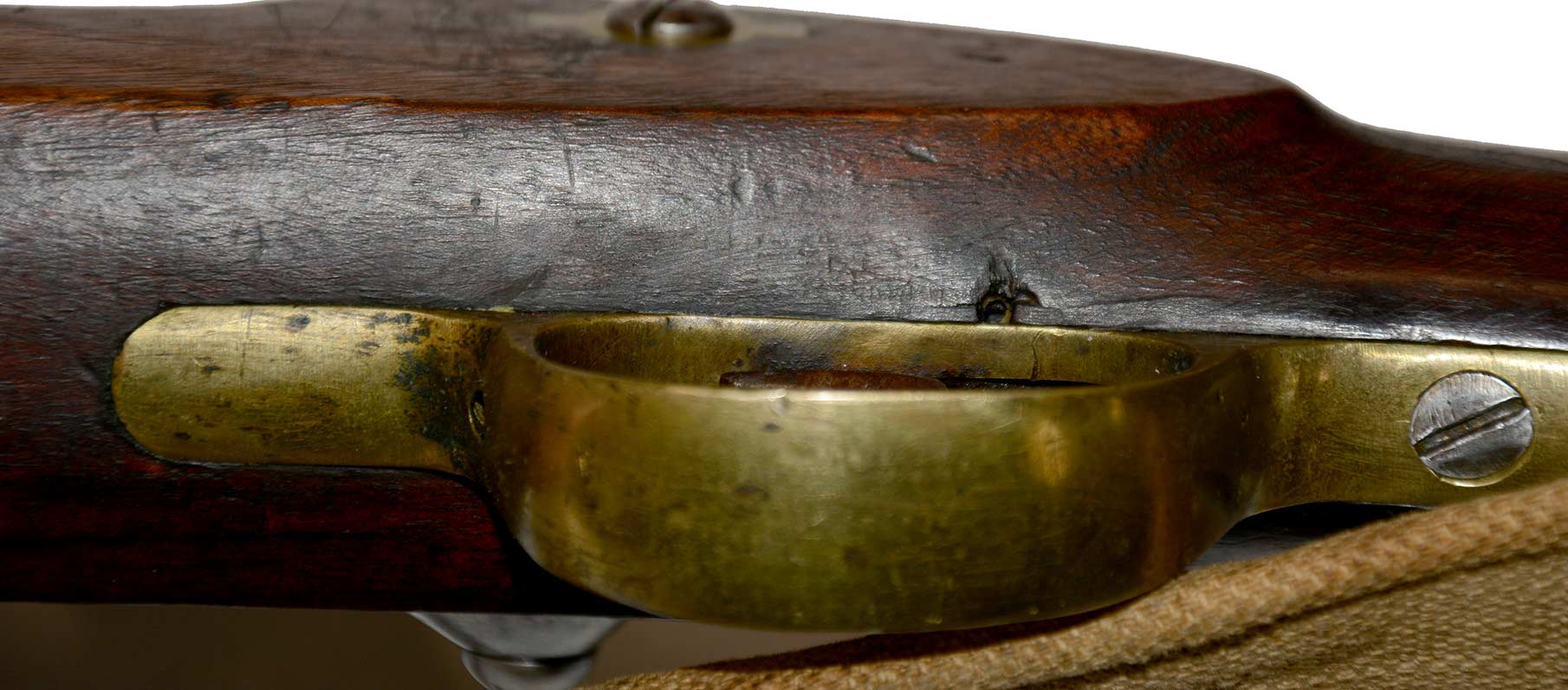
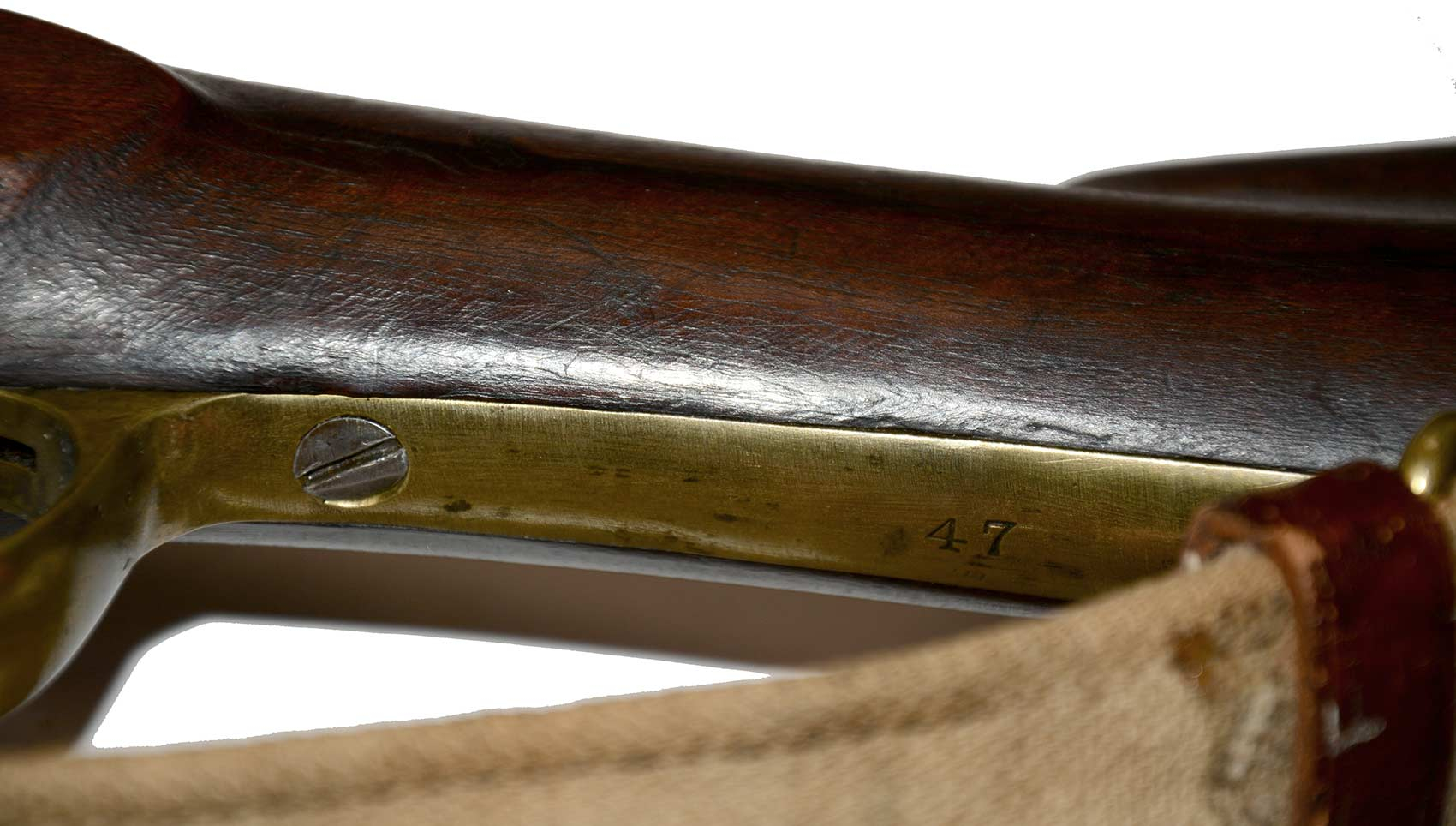



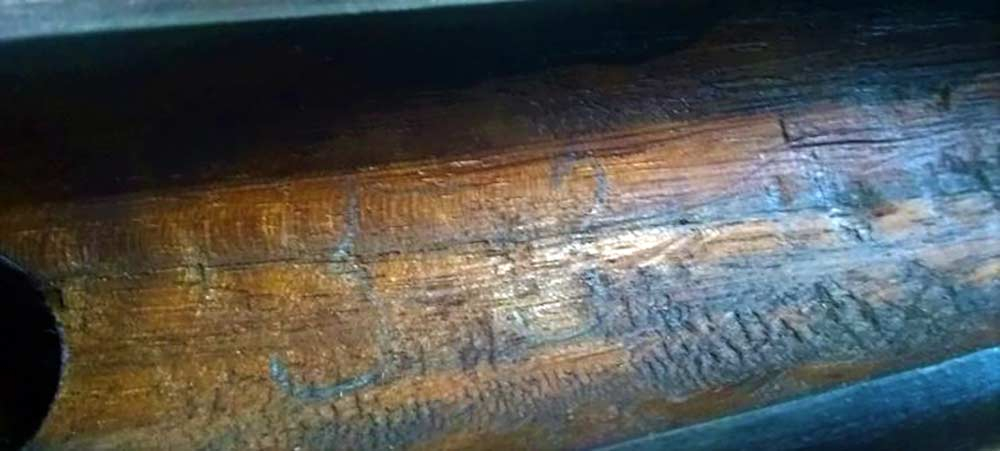
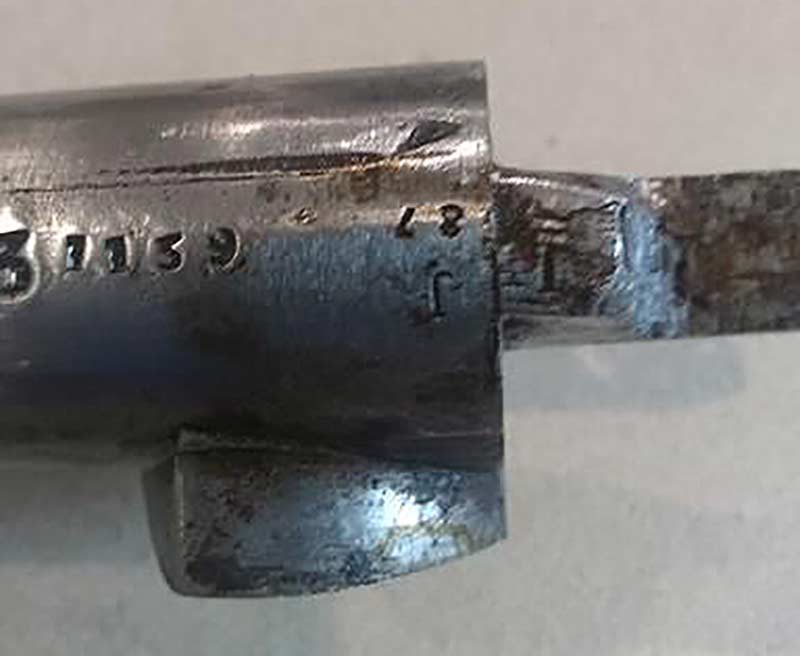
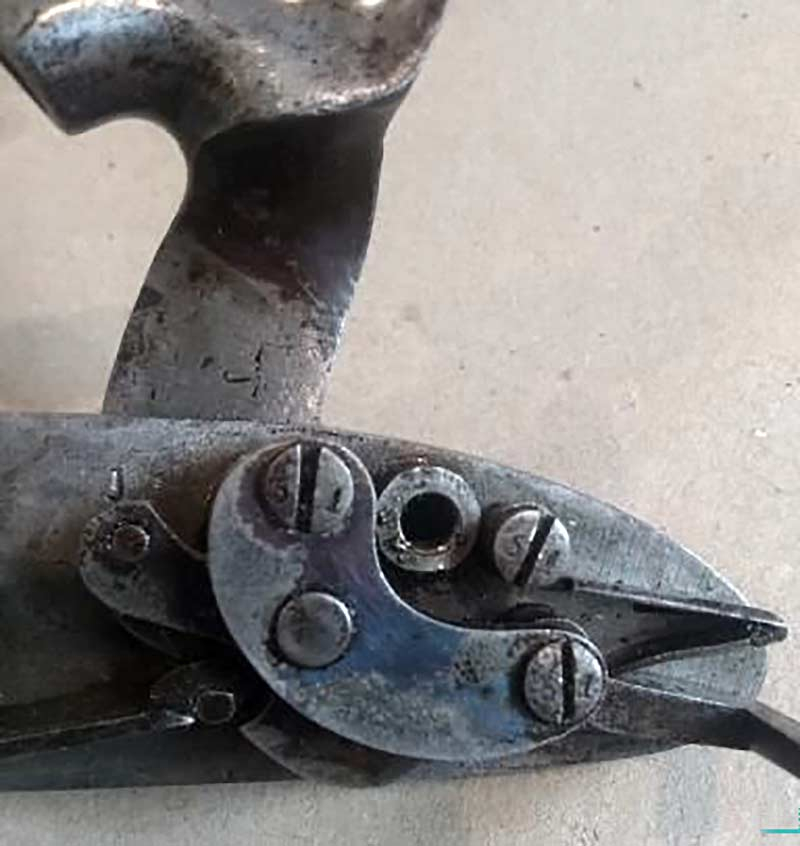

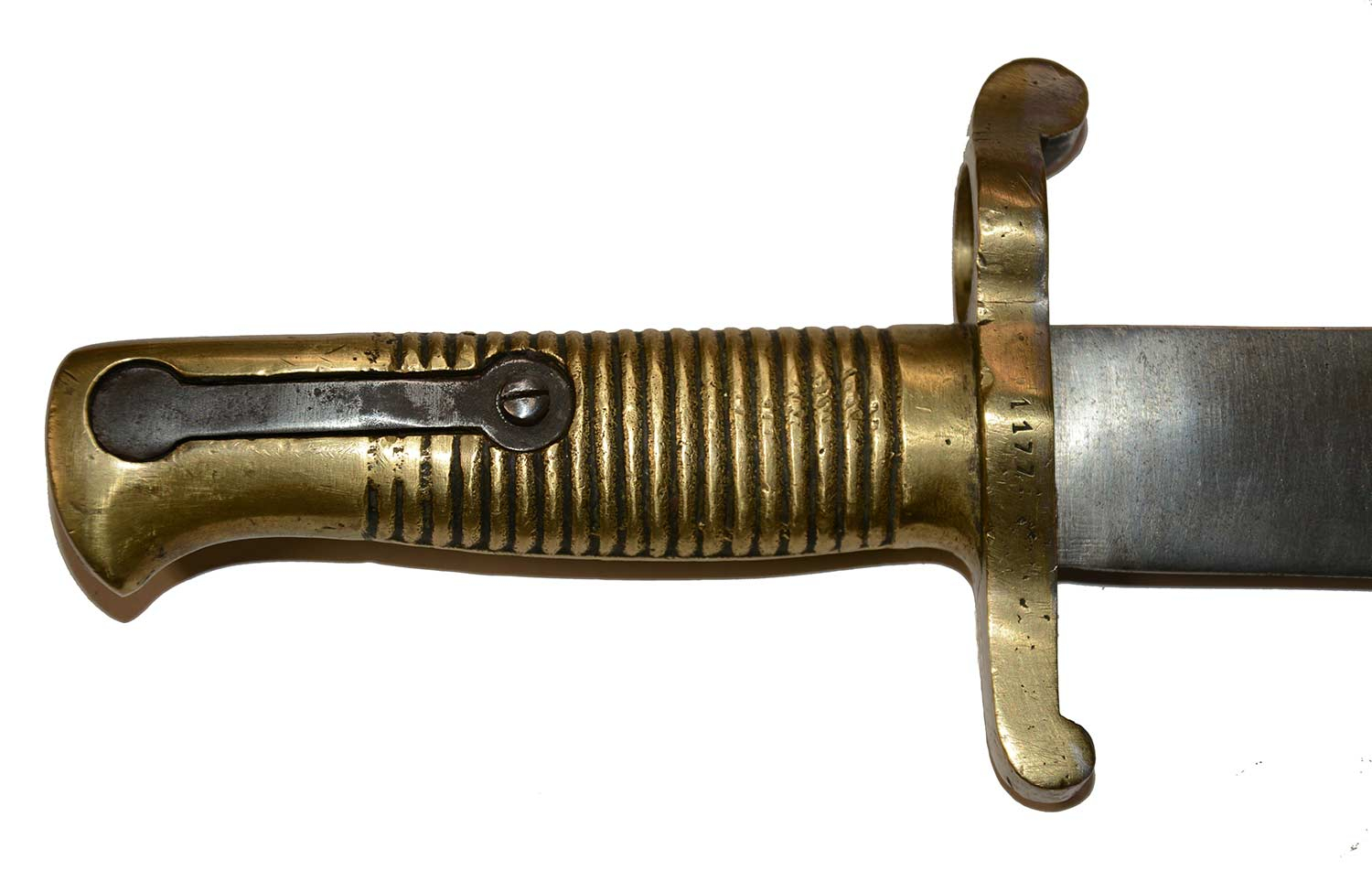
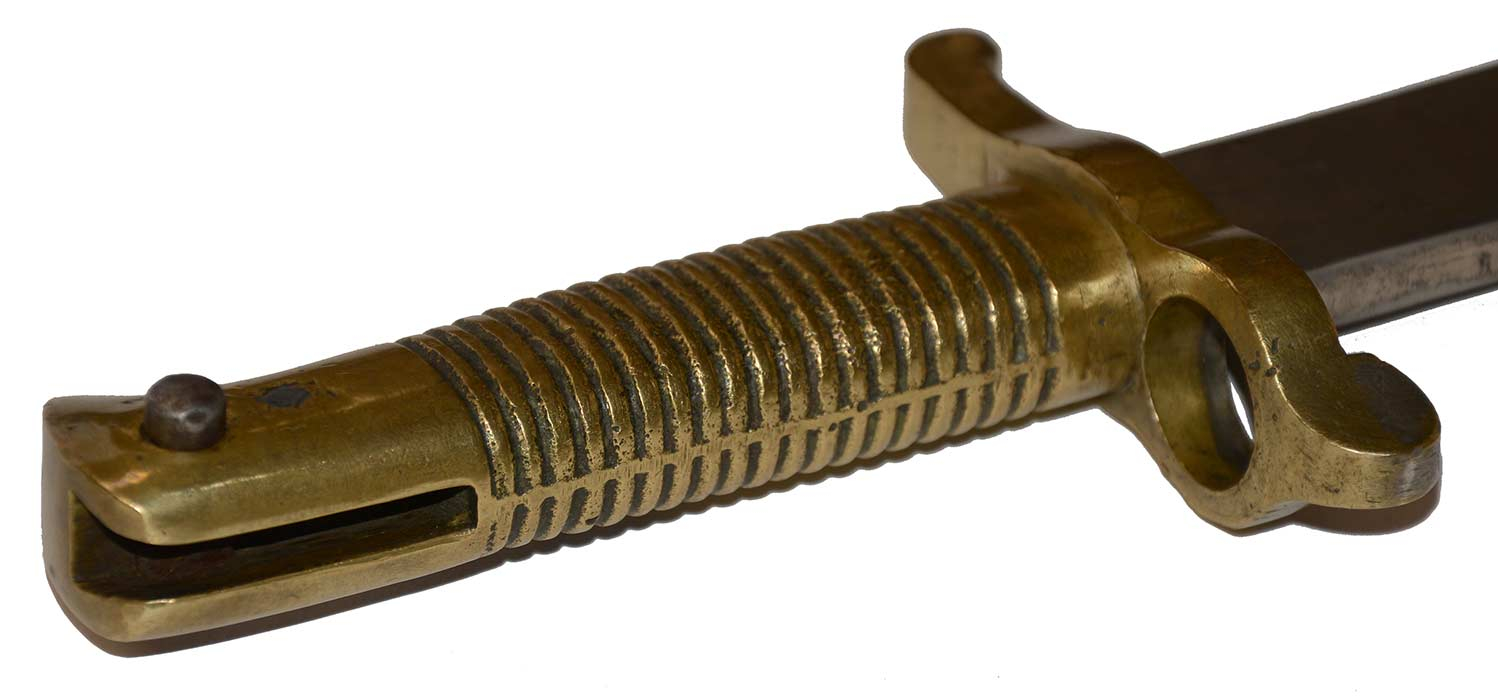
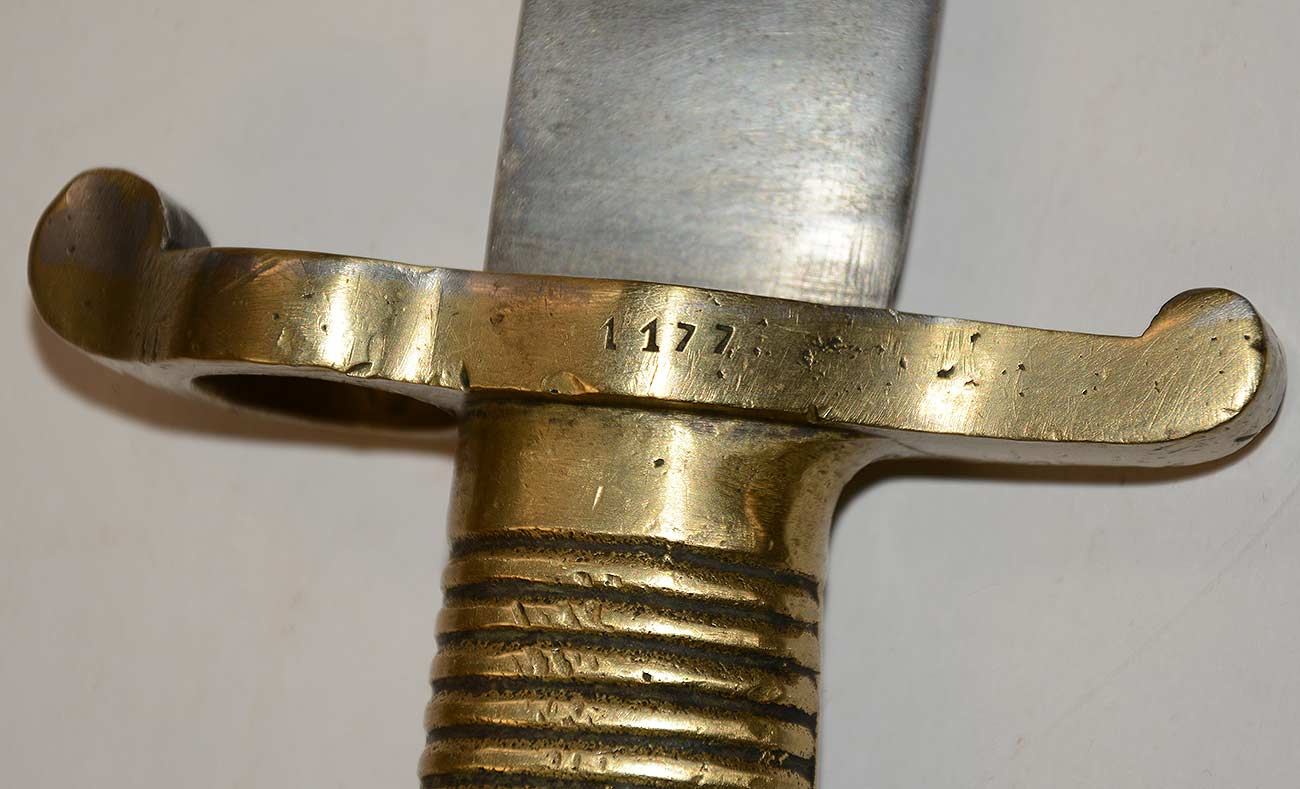
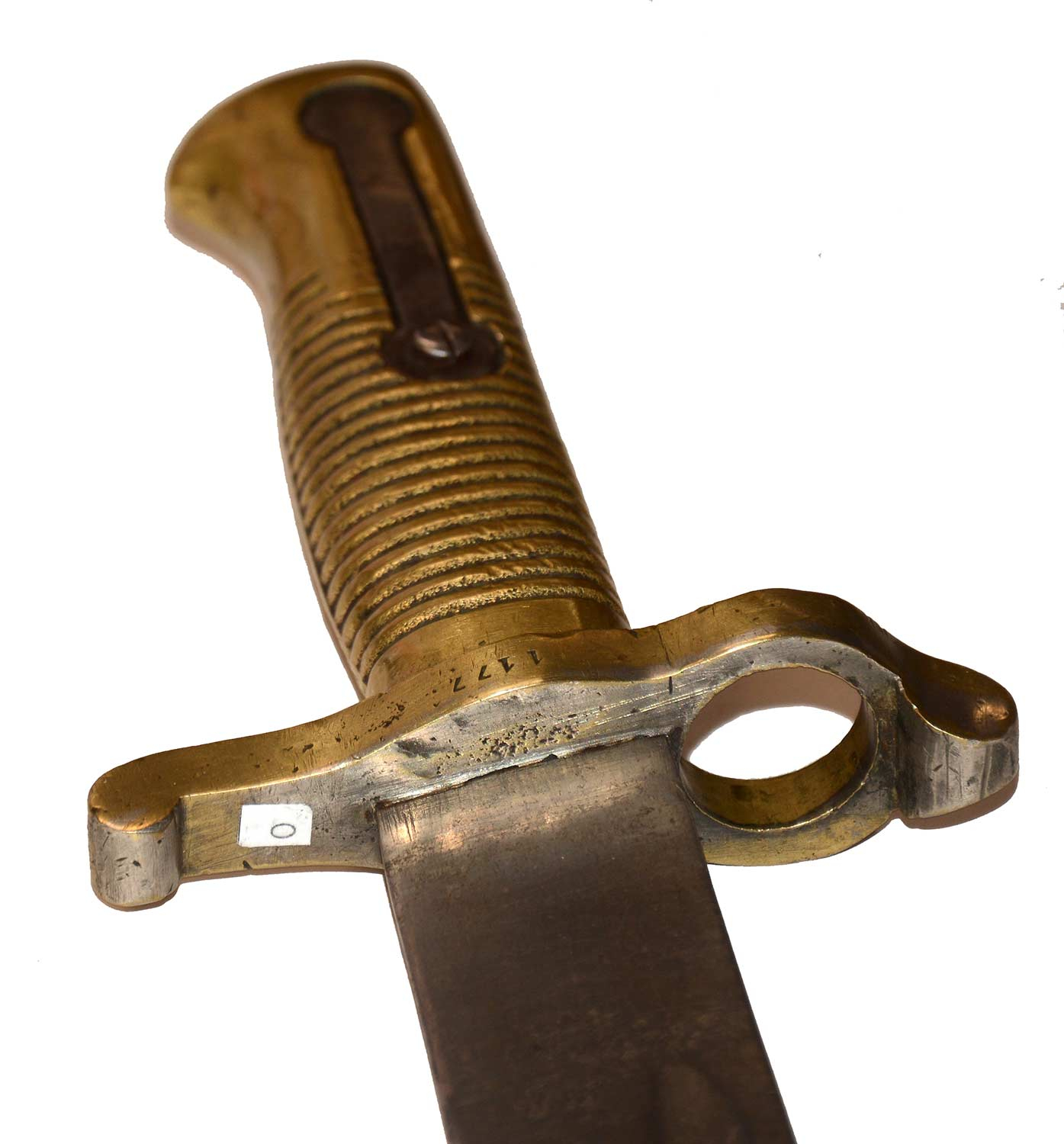
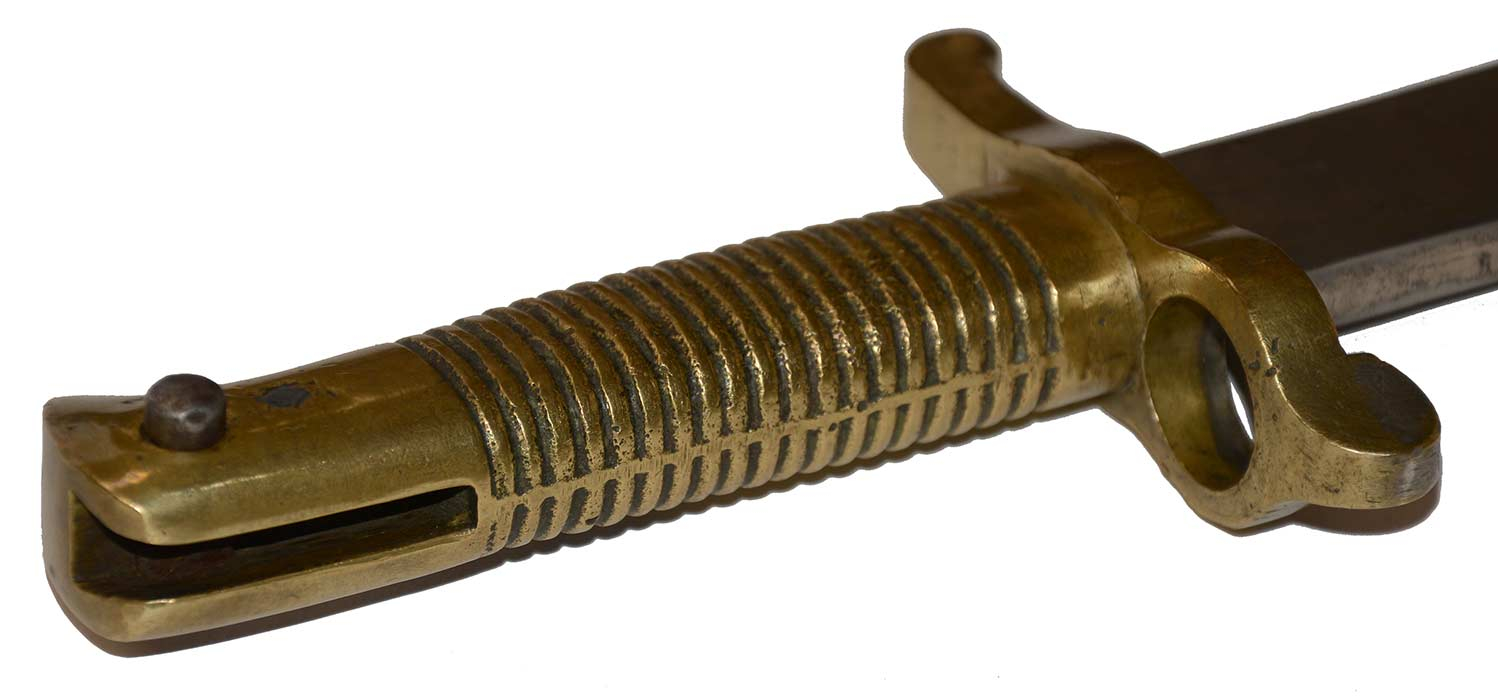


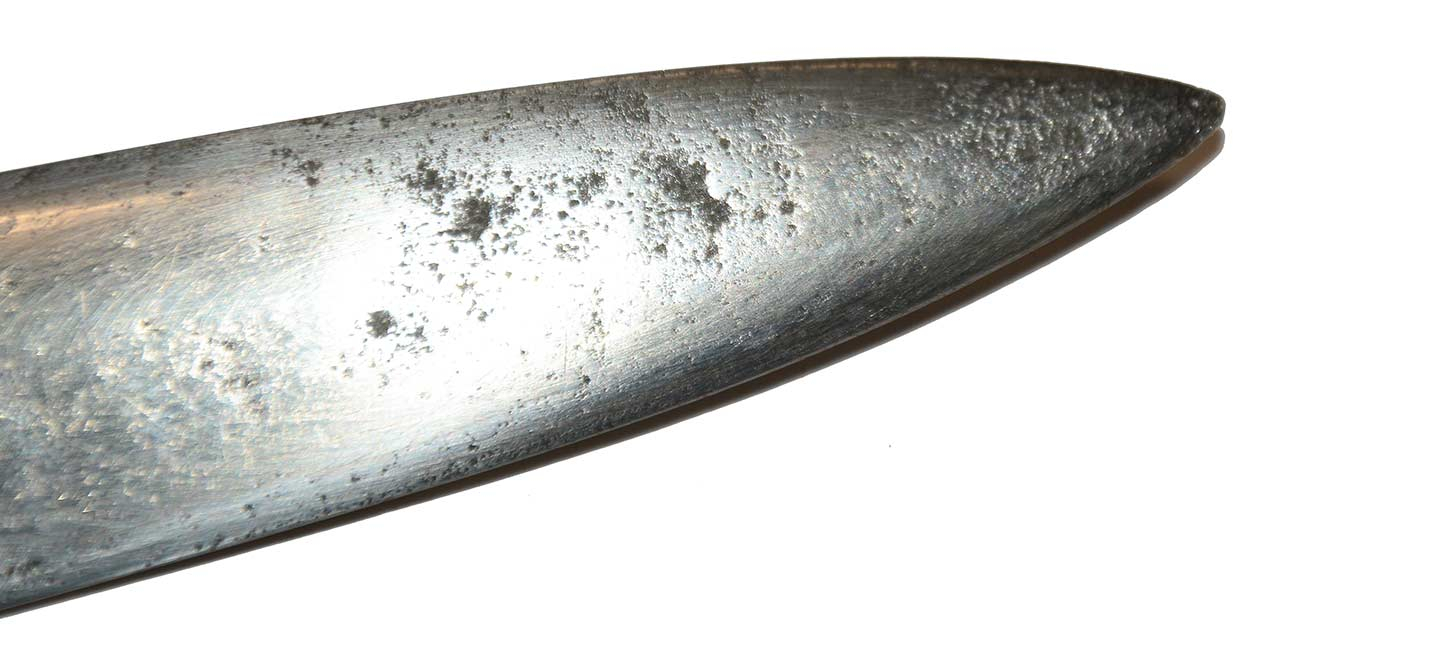


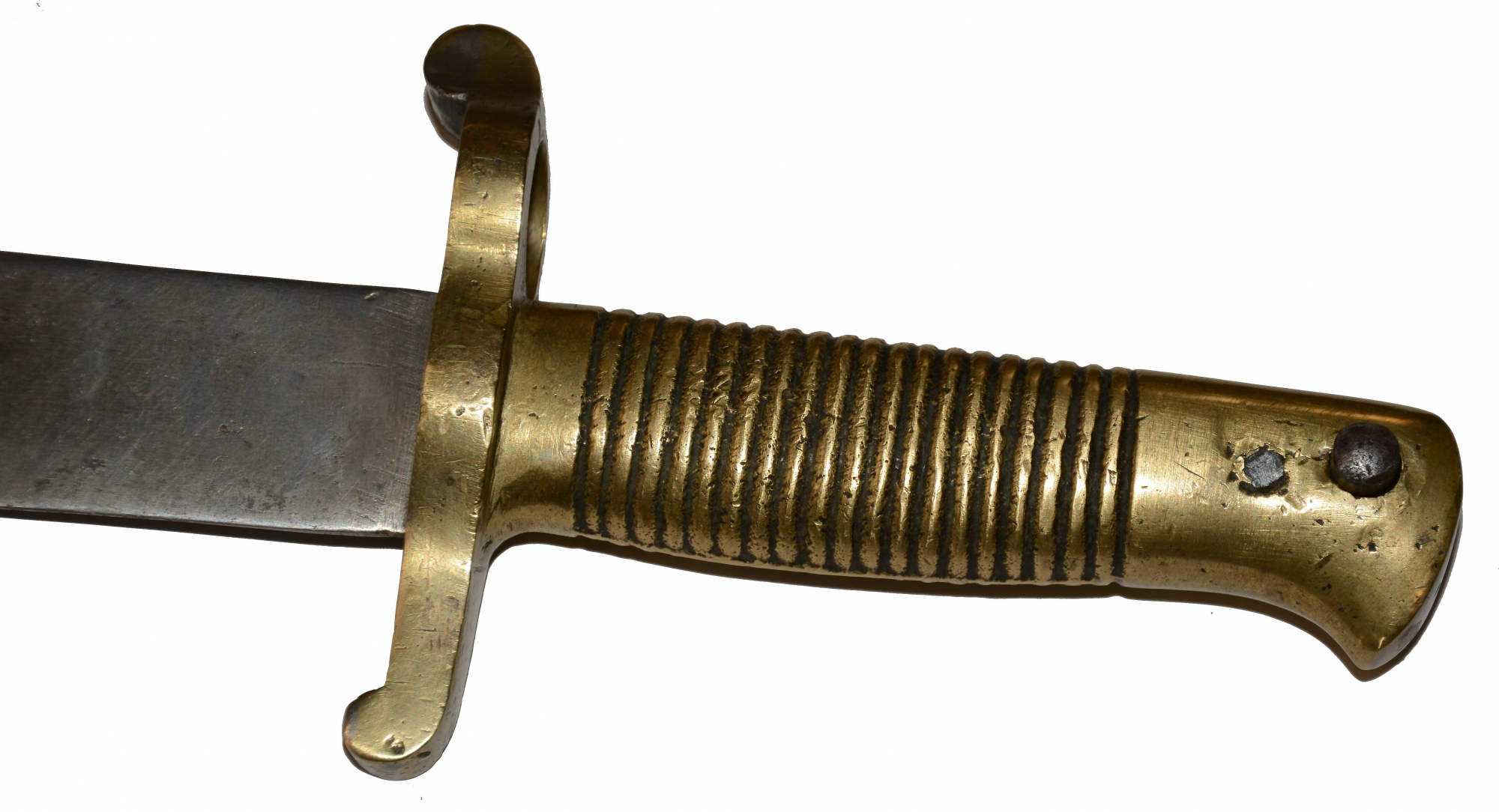
$39,950.00 SOLD
Quantity Available: None
Item Code: 88-144
This Cook & Brother New Orleans 2 band rifle is in "gun collector" condition; that is spectacular! Once in the famous collection of Dr. Edgar V. Howell Jr. of Atlanta Georgia it has for 10 years now been in the hands of one of this country's top authorities on Confederate militaria and arms.
The arm was based upon the British made Enfield Pattern 1856 “Short Rifle”. The Cook rifle followed the general profile of the British made guns, and were similar in size, barrel length and caliber. Both had 33” barrels and nominal overall lengths around 48”. The British rifle was .577 caliber, and the Cook rifle was nominally .58 caliber. Like the British made rifles, the Cook was rifled with three lands and grooves. The barrels of the Cook & Brother firearms were made from iron bars that were heated and twisted around a steel mandrel, unlike British barrels that were either hammer forged iron or eventually made of cast steel. This twisting process produced a distinct grain pattern. Some Cook barrels were browned, while others were finished bright. Like the British rifle, the Cook variant used a jag-head ramrod. While the English Pattern 1856 rifle was iron mounted, the Cook rifle utilized cheaper and easier to manufacture brass furniture for the Butt plate, trigger guard and nose cap. The Cook rifle even used brass for the barrel bands and sling swivels. Another primary difference between the rifles was that the Cook utilized a fixed rear sight on most of their guns rather than the adjustable leaf sight found on the British made guns. The Cook rifles were originally designed to accept a saber bayonet like their English counterparts, and initially mounted a keyed lug on the barrel, near the muzzle of the purposes of affixing the saber bayonet. These lugs only appear on the earliest production Cook rifles.
The weapon offered is in amazing condition for a Confederate used and produced arm! The lock is marked forward of the hammer: "Cook & Brother N.O." and the date "1862". The serial number is "1159". The Confederate First National flag is deeply stamped at the rear of the lock. Inside the lock one finds the lock screws have their own series of 2-digit numbers, in this case "51". This "51" appears on the external hammer screw also. A "J" is stamped on the inside of the lock, and on the inside of the hammer this ties it all neatly together. Note evidence of original casehardening. The barrel shows the usual Cook & Brother markings and reads: "Cook & Brother N.O. 1158". Of note is that deeply stamped under the barrel is "1159"; this despite the "1158" on the barrel top ties in the barrel component with the lock and nose cap! Why "1158" appears on the barrel? Maybe just an armorer's error later corrected? The barrel is also marked "Proved" at the left breech. Under the barrel the same "J" that is inside the lock can be seen near the breech and on the breech plug. The rifling remains strong. As previously noted, the serial number "1159" appears on the bottom of the brass nose cap. The trigger guard bears a larger number "47". A two-digit number is again typically seen on Cook trigger guards and was not intended to be a mating or serial number. The barrel is mostly smooth with the signature distinctive twist of the iron Cook & Brother barrel being plainly visible. The original Cook unique pattern threaded ramrod is in place. The wonderful, unmolested crisp stock is solid and complete, full-length and without any breaks or repairs; the best we have encountered. Serial number "1159" would indicate that this gun was made for Alabama (800-1800 serial range). Of interest to the historian is the fact that the 22nd Alabama regiment, in part, had Cook Rifles at the battle of Shiloh.
THE ATHENS CONNECTION: At first whiff one would accept this weapon as an 1862 New Orleans production rifle, but the fact is that this arm was "Collected" and re-worked at the Cook facility, Athens Georgia in the spring of 1864. 3 features make this manifest to the Confederate arms expert. 1) The brass trigger guard is the "single piece" Athens' production pattern. (Note that the trigger guard has a small hole in front typical seen on these arms. Some say a casting flaw as seen regularly in Confederate castings namely a small "air" hole while many experts believe this was done intentionally to facilitate the ring for a nipple chain. Cooks are known with the device in place). 2) The front sight is the Athens' production pattern not the early expected Cook N.O. type. 3) The serial numbers on the lock and barrel tang screws date, about May 1864, and are Athens' production. These screws have in addition the Cook signature "punch mark". So, the lock, stock nose cap and barrel date to 1862 while the balance of the gun was re-done and upgraded; that is re-built at Athens' Georgia in 1864. The serial number on one of the lock screws and the barrel tang screw is "5033" (The highest possible production serial number for a Cook arm is accepted as 8000 and this figure has to date prior to December of 1864 when the factory closed upon the death of F. Cook). When the barrel is unseated from the stock the penciled-in number "33" is clearly visible and represents the last 2 digits on the afore mentioned screws. It is possible the entire number "5033" was there but when they inletted for the internal ramrod spoon the digits "50" disappeared. This ties in the stock and these screws! The 2 brass bands have no serial numbers, nor did they, which is not untypical of later Cook production rifles. The barrel has its original Cook brass bayonet adaptor and has always been on this rifle.
This rifle has a fine perfectly fitting bayonet which was not originally with it when Dr. Howell owned it, but amazingly it is only 18 numbers off! The saber bayonets produced for the majority of the Cook & Brother rifles were also based upon their British Pattern 1856 Enfield Rifle counterpart. The grip had grooves cast into it to improve the grip surface and an integral muzzle ring with a rudimentary “cock’s comb” finial on the top. The lower part of the cross guard terminated in a rudimentary flat disc finish. The pommel cap had a rudimentary bird’s head profile and the bayonets designed for use with the adapter rings were cut for a trapezoidal bayonet lug. A spring bayonet lug catch was attached to the grip with a screw on the obverse and was operated with a push-button stud on the reverse. This allowed the bayonet to lock on the lug and to be release from the lug as well. The serial number "1177" is stamped on the obverse of the cross guard that matched the bayonet to the rifle that it had been originally fitted to. This early number places the bayonet in the period of New Orleans production like the rifle and also designates the bayonet as having been part of the Alabama rifle contract. Other than the serial number, there are no markings on the bayonet. The bayonet measures 26 13/16” in overall length, with a 22” semi-Yataghan blade that is 1 3/16” wide. The rear of the hilt is cut for a trapezoidal bayonet lug of the type used on the Cook & Brother saber bayonet adapter rings. Patina matches the rifle perfectly. Of note is the Confederate, late war, heavy linen sling which is reported to have always been on this rifle. A word on re-furbished Confederate weapons. This was a universal practice in all nations of the world since ancient times. Weapons wore out or were damaged in field service and needed to be replaced with newly made weapons or repaired and re-conditioned arms. That might mean brand new parts or old components refreshened. This Cook rifle was 2 years in active service before it was returned to the factory from where it originated then removed to Athens Georgia from the captured city of New Orleans. It is also very possible that it was "collected" damaged after battle and sent to Athens? In the spring of 1864 General Robert E. Lee himself directed infantrymen of the Army of Northern Virginia to, when possible, exchange the "older" Enfields they had been carrying for two years or more for "the new Union rifles" (Model 1863/64 Springfields). Rifle-muskets with warped stocks. worn bores and damaged muzzles were not the ideal or hardly effective! This post war apologist non-sense that the Confederates were carrying the dregs of rifles is not substantiated by the record and sadly today grasped upon by dealers trying to unload dreadful wrecks of guns on gullible buyers. Additionally, after New Orleans production Cook rifles with all matching serial numbers on all components are the exception rather than the rule. Matched numbers are usually seen on Athens Cook carbines and musketoons, but on rifles very rarely. The expediencies of war made this otherwise good idea impractical. We refer interested parties to the outstanding book by Dr. Murphey and H. Madaus, Confederate Rifles and Muskets. Pages 133 to160. This New Orleans/Athens Georgia Cook rifle, with no additions or modifications since 1864 (and this is guaranteed) is worthy of the finest collection or museum, in fact, it has been in two of the best collections extant prior to this offering. [pe] [ph:L]
DISCLAIMER: All firearms are sold as collector's items only - we do not accept responsibility as to the shooting safety or reliability of any antique firearm. All firearms are described as accurately as possible, given the restraints of a catalog listing length. We want satisfied customers & often "under" describe the weapons. Any city or state regulations regarding owning antique firearms are the responsibility of the purchaser. All firearms are "mechanically perfect" unless noted, but again, are NOT warranted as safe to fire.
~~~~~~~~~~~~~~~~~~~~~~~~~~~~~~~~~~~
THIS ITEM, AS WITH ALL OTHER ITEMS AVAILABLE ON OUR WEB SITE,
MAY BE PURCHASED THROUGH OUR LAYAWAY PROGRAM.
CLICK HERE FOR OUR POLICIES AND TERMS.
THANK YOU!
Inquire About COOK RIFLE
Most Popular
Historical Firearms Stolen From The National Civil War Museum In Harrisburg, Pa »
Theft From Gravesite Of Gen. John Reynolds »
Selection Of Unframed Prints By Don Troiani »
Fine Condition Brass Infantry Bugle Insignia »
Large English Bowie Knife With Sheath 1870’S – 1880’S »
Imported (Clauberg) Us Model 1860 Light Cavalry Officer's Saber »
featured item
THE MEDALS OF A CONFEDERATE GENERAL – BRIG GEN. ALLEN THOMAS, JR.
Offered are three medals that were worn proudly by Civil War Confederate Brigadier General Allen Thomas Jr. "Born in Howard County, Maryland, he was an 1850 graduate of the College of New Jersey. He studied law in Maryland and maintained a practice… (1289-32). Learn More »
site search
Upcoming Events
The shop is currently closed so that we may conduct our annual inventory. We are available by phone… Learn More »


